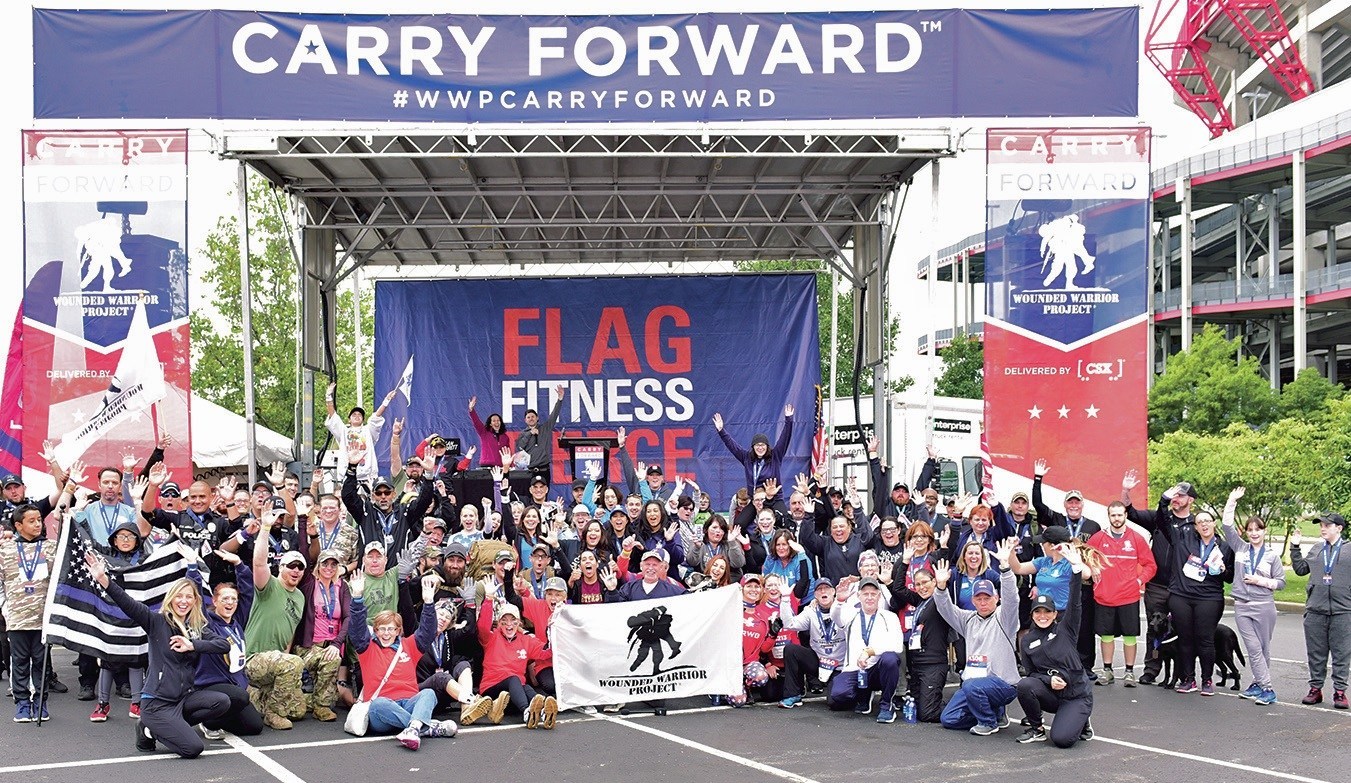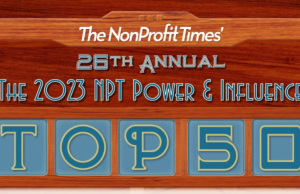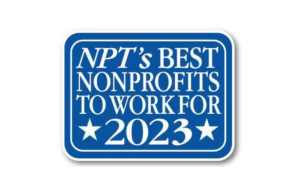Mary Pittman has been chief executive officer (CEO) at Public Health Institute for about 11 years — precisely the average tenure for chief executives among large organizations recognized in the 2019 Best Nonprofits To Work For.
For large organizations that participated in Best Nonprofits but did not make the cut, the average tenure was just more than seven years. It was the widest gap as far as CEO tenure between large organizations that won a place on the list and those that were not. PHI ranked No. 4 among large organizations (those with 250 employees or more in the United States) and No. 48 overall in the 2019 Best Nonprofits To Work For report.

That’s not to say that CEO tenure is a deciding factor in determining Best Nonprofits.
Harrisburg, Pa.-based Best Companies Group (BCG) surveyed employees on 79 questions in eight categories as part of the Best Nonprofits study. Positive responses were recorded in the Employee Benchmark Report.
Large organizations in the Best Nonprofits averaged 89 percent positive responses compared with 81 percent for large organizations not on the list. Communication was one of the areas where large Best Nonprofits distinguished themselves from the rest of the pack, outpolling the field by 10 percentage points in the category of Culture and Communications (87 percent to 77 percent).
With so many employees, in so many places, there’s no such as thing as over-communication at PHI. “You can’t have too many ways to have touch points within the organization,” Pittman said.
Now in its 55th year, the Oakland, Calif.-based PHI has between 600 and 700 employees at any given time, scattered around the globe. The majority of staff are located in four U.S. offices, including three in California (Monrovia, Oakland and Sacramento) and another in Washington, D.C., all of which have more than 100 employees. There also are one or two employees in at least a dozen states, as well as expatriates around the world, including South America, Asia and South Africa.
“We have monthly central staff meetings so we’re building community in central staff. We realized there were lots of others not getting connection to central offices,” she said.
PHI last year held a “town hall” webcast, providing information, answering questions, and prompting interaction between different locations. “People loved it,” Pittman said.
The organization has made a commitment to do that two times a year, the next one scheduled for this month. “People really need to have that connectivity,” Pittman said, adding that an internal employee newsletter also helps share information.
“You have to communicate. You have to do it in multiple ways, over and over again,” said Valerie Woodson, director of human resources.
The American Arbitration Association (AAA) is headquartered in Lower Manhattan but has 28 offices in 20 states with a total employee headcount of almost 600.
In an organization with such a wide geographic footprint, the key role for human resources to play is to be present and accessible, according to Eric Dill, vice president, human resources. “We use technology as best we can to overcome the geographic impediments,” he said. But they also do plenty of site visits. The HR staff and CEO try to get to various locations several times throughout the year, Dill said, hosting town-hall style meetings.
AAA ranked No. 49 overall among Best Nonprofits and No. 5 among large organizations.
The biggest challenge is keeping people engaged in an environment where there’s a geographic disparity among offices and headquarters, according to Dill. “Headquarters is viewed as “those guys’ in organizations that have that geographic footprint. Here it’s becoming a lot less so. Less center of universe and more importantly a partnership,” he said.
Wounded Warrior Project (WWP) ranked first among large organizations and seventh overall. While its headquarters is in Jacksonville, Fla., WWP has offices and employees around the country.
“This year we continued focus on transparency and culture,” CEO Mike Linnington said, to ensure that employees are engaged and aligned with the mission and understand the role they play in the success of the wounded veterans served. “We also honed in on WWP’s core values — with service and innovating leading the way,” he said.
WWP started a shared communications event which connected all of its offices and employees in a live-streamed forum. “Through the use of a free website, teammates interacted with each other across the country in real time,” Linnington said. “Sharing in information is important in keeping everyone informed, aligned, and engaged” in support of mission, he said.

Two other categories also had similar 10-point disparities: Leadership & Planning (88 percent to 78 percent), and Work Environment (91 percent to 81 percent).
The highest positive responses for large organizations in the Employee Benchmark Report were in the category of Overall Engagement (92 percent), followed closely by Pay and Benefits (91 percent) and Work Environment (91 percent).
Forty percent of large organizations in the Best Nonprofits cover 100 percent of health premiums, compared with just 14 percent of large organizations that did not make the list. Large Best Nonprofits also squeezed a few extra paid holidays into their calendars, an average of more than 12 compared with fewer than 10 for large organizations that didn’t make the cut. Similarly, 60 percent of large organizations that made the top 50 offered paid time off (PTO) compared with only 29 percent that were outside the top 50.

Dill recalled the story of a staff member who relocated to the West Coast last year because the person got engaged. The employee stayed enrolled in AAA’s benefits program because it was so much better than the benefits at her spouse’s for-profit employer.
“Any nonprofit or HR person will tell you, that’s the best phone call you can ever receive,” he said. Dill emphasized the general duty of care for all welfare and benefit programs is the retention aspect; employees appreciate it.
Benefits at PHI also rank high. “Yes, we have great benefits but what we hear when we ask, what describes us best, [employees] tend to talk about flexibility, support, equity, great co-workers, and yes, the benefits are good,” Pittman said.
All large organizations in the Best Nonprofits study allowed paid time off for community service activities or volunteer work compared with less than three in 10 large nonprofits that didn’t make the list. Another unanimous area for large nonprofits was employee bonus or incentive programs. Among large nonprofits that did not make the list, only 71 percent offered such programs.
Four of five large Best Nonprofits also offered cafeteria or meal subsidies, free snacks or beverages; only 29 percent of large organizations not on the list did so.
“The kind of work we do is important and the support to our employees to able to do that meaningful work is just as important,” Woodson said.
“We understand that people are our best assets but we’re also a great organization with a great reputation so we have to make sure our business needs are met,” Woodson said. “The only way to do that is attracting good people and keeping them.”
Both organizations also noted their programs for recognizing employees. At AAA, the president’s award goes to employees who live and exemplify its core values. Ordinarily, it’s three employees who are feted in three categories, Dill said. CEO India Johnson announces the winners’ names in a company-wide conference call and you’ll hear staff in that respective office cheer. Only the last time, in a surprise move, the CEO continued past three, recognizing six staff. “One thing you can predict is that she can be unpredictable,” Dill said of Johnson.

At PHI, employees also are celebrated for various accomplishments. It could be programmatic, completing a major project, or publishing something with a major impact, or even something on their personal time, professional organizations that they may get to a point of leadership, or completed a marathon for the first time that they aspired to do. Professional development also has to have a personal development side to it, Pittman said.
“Besides the mindfulness, trying to help people be able to look at financial stability, we also try to do fun activities, celebrate the diversity of our organization,” she said.
Woodson “feels really good” about PHI’s voluntary turnover rate, which can range from 10 to 13 percent over the year. “A lot of employees have been around a long time,” she said, pointing out Pittman’s executive assistant, who has been with the organization 37 years, and PHI’s general counsel, who has served almost 40 years. Woodson herself has been at PHI for a quarter-century.
The lowest positive response rate for large Best Nonprofits on the Employee Benchmark Report was 84 percent in Training, Development and Resources, a category in which large organizations that did not make the list also scored lowest, 76 percent.
Providing professional development opportunities for employees can be a challenge. PHI purchased a management system several years ago through Skill- Soft, making available to all employees and managers, at any time, a catalog of more than 300 online classes.
At AAA, average training hours per employee is just above 30, according to Dill, reaching 34 hours last year.
Employees are responsible for honing their own professional development plan. The organization is coming toward the end of a pilot program in its largest business unit where it’s invited staff to participate in professional development. That includes a mentor, assessment of skills and talents, and some one-on-one coaching to define a direction, ask employees what they aspire to be and complete an honest self-assessment. “We have the conversation with them,” he said.
AAA has promoted almost 10 percent of staff each year for the last several years, he said. “We try to grow from within as best we can. It’s this notion of continuous improvement, which requires continued development,” Dill said.
AAA has been able to winnow its turnover rate from about 17 percent in 2013 to 11 percent last year. To Dill, that translates to cost savings — approximately $185,000 that could be reinvested into other employee programs.
What’s most expensive is healthcare. In 2013, AAA transferred from an insured platform on medical benefits to a self-insured program. It assumes some more risk but it also saved more than $3 million over that period. That savings can be reallocated to strategic programs, for instance, covering the estimated $200,000 cost a student loan repayment that was recently launched.
“That’s the challenge for any nonprofit, you don’t know where your dollars are going to come from. Nonprofits tend to be a lot more conservative, for a good reason, spending around benefits. You don’t want to offer something and then have to take back in a year or two,” Dill said. “During austere times, one of the first things you see cutback is tuition assistance,” he said. As far as loan repayment assistance, “there’s a factor there you can speak to employee retention and recruiting — there’s a trade off,” Dill said.
“If you’re saving $1 million a year because of restructured existing programs, but did not impact or carve into the level of benefits, you can spend that money elsewhere on benefits,” Dill said, such as reduced copayments for employees.








